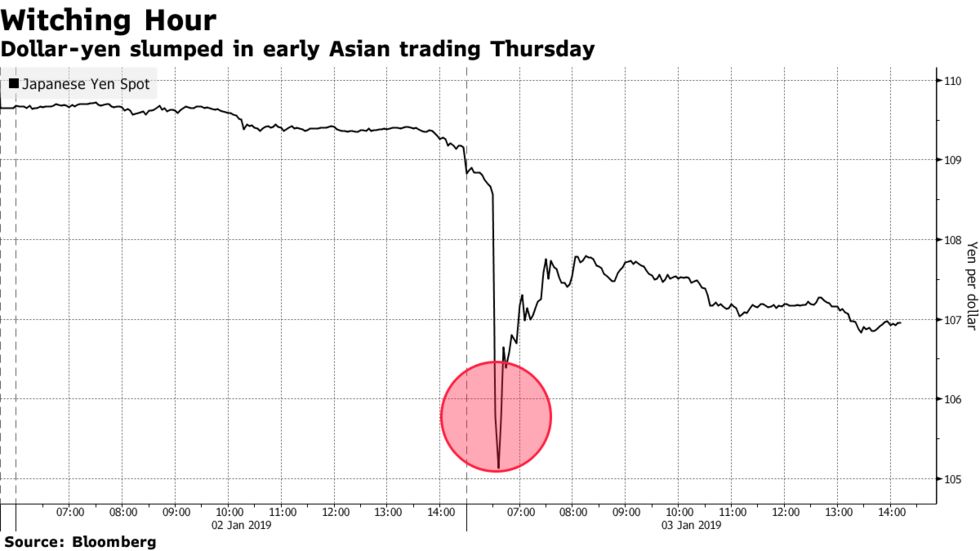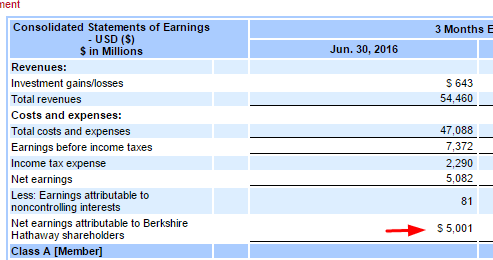Contents:


After which its aged asset base will be unable to produce goods efficiently. The company calculates the net asset turnover ratio by dividing net sales by average total assets. A ratio indicating the operating leverage of a firm where the net sales are divided by the fixed assets is termed as the Fixed Asset Turnover Ratio.
She brings in financial markets subject matter expertise to the team and create easy going investment content for the readers. The right mutual funds for your long-term goals with inflation-beating growth plus risk management. The best way to increase revenue is to focus your efforts on improving the asset turnover ratio. If it’s low, it results from poor asset utilisation or slow sales. Of a company whose asset turnover ratio has been declining over time. This ratio shows how efficiently the sales are generated from the capital employed by the company.
In some cases, the cost of goods sold is used in the numerator in place of net credit purchases. Average accounts payable is the sum of accounts payable at the beginning and end of an accounting period, divided by 2. Generally, a high asset turnover ratio is considered good, as it shows that receivables are quickly collected and only a little excess inventory is kept on hand.
- Sometimes investors also want to see how companies use extra particular belongings like fixed property and present belongings.
- The working capital ratio is derived by dividing the current assets by current liabilities.
- It may not consider external factors such as economic uncertainties, and also eliminates consideration of human elements within a company.
- The asset turnover ratio is expressed as a quantity instead of a percentage in order that it could possibly simply be used to check firms in the same trade.
- Rohit Tech Company is a tech start-up company that manufactures a new tablet computer.
Asset turnover ratio is a sort of effectivity ratio that measures the worth of your small business’s sales revenue relative to the value of your company’s belongings. It’s a superb indicator of the effectivity with which a company can use assets to generate revenue. Typically, total asset turnover ratio is calculated on an annual foundation, although if needed it can be calculated over a shorter or longer timeframe. Sometimes, investors and analysts are extra interested in measuring how quickly a company turns its fixed assets or current belongings into gross sales. In these circumstances, the analyst can use specific ratios, such because the mounted-asset turnover ratio or the working capital ratio to calculate the efficiency of these asset courses. The asset turnover ratio is one of the efficiency ratios used while analysing a company.
The asset turnover ratio has wide importance for investors and may influence their investing decisions. Assume XYZ Company is a car manufacturing company currently looking for new investors and has a meeting with an angel investor. The investor wants to know how well the company uses its assets to produce sales. The following are the details found in the company’s financial statements. Investors and stakeholders use the ratio to judge a company’s performance and gauge how much revenue is being generated through its assets.
Inventory Turnover Ratio (InTR)
A change in the turnover ratio can also indicate altered payment terms with suppliers, though this rarely has more than a slight impact on the ratio. Average Total Assets are usually calculated by adding the beginning and ending total asset balances together and dividing them by two. Average inventory is the average cost of a set of goods during two or more time periods.
On the other hand, a lower ratio may indicate a problem with one or more asset categories comprising of total assets – inventory, receivables, or fixed assets. An asset turnover ratio of less than 1 can be a good indicator of the company’s performance. For example, industries like water and gas utilities and real estate have a very large asset base, but the revenue generated is not that big. Hence, the standard asset turnover ratio in these industries could be less than 1. On the contrary, companies operating in the Real Estate sector have larger asset bases but lower turnover.
Return on Total Assets (ROTA): Overview, Examples, Calculations – Investopedia
Return on Total Assets (ROTA): Overview, Examples, Calculations.
Posted: Sun, 26 Mar 2017 05:11:12 GMT [source]
It assesses a the asset turnover ratio calculated measures’s ability to create profit from its assets. This ratio compares a company’s gross revenue to its average total number of assets to determine how much revenue was made per rupee of assets. The accounts payable turnover ratio also referred to as the creditors turnover ratio measures the average number of times that a company pays its creditors over a particular period. The accounts receivable turnover ratio measures how efficiently a company is collecting revenue and using its assets. A high ratio indicates that a business is efficiently generating sales with relatively low fixed assets. It also can imply that the company is outsourcing its manufacturing to reduce investments in fixed assets and thereby, maintaining low in-house production capacity.
Gross Profit – Meaning, Formula, Calculation, And More
Low receivable turnover may be due to a loose or non-existent credit policy, inadequate collection function, and/or a large proportion of customers having financial difficulties. High Inventory Turnover Ratio indicates that goods are sold faster. And a low turnover rate indicates weak sales and excess inventories, which may be challenging for a business. To get the true measure of the sales, refunds are minus from the sales.
This might be even due to low cash reserves, restricting the company’s ability to maintain an average inventory level, and so is not prepared for capturing prospective sales. This scenario is possible when the company has high debt and low cash reserves. The asset turnover ratio is a good indicator for measuring the health of a business and how efficient a company is in utilizing its assets to generate revenue. Similarly, an asset turnover ratio of more than 1 will not always mean the company is in a good position. Here, the assets are relatively less, and the revenue generated is greater.
The asset turnover ratio, or the total asset turnover ratio, measures how well a company deploys its assets to generate income. In this sense, the asset turnover ratio compares the assets of a company against the revenues generated. Some of the commonly used efficiency ratios include inventory turnover ratio, asset turnover ratio, accounts payable ratio, and accounts receivable ratio.
Operating Cycle (OC)
The asset turnover ratio calculates the web sales as a percentage of its complete property. The total asset turnover ratio will inform you when you’re using your business’ belongings efficiently and producing gross sales. It’s calculated by dividing complete sales or revenue by common complete assets. A excessive ratio means the business is extra efficient, whereas a lower ratio means your corporation isn’t using its assets effectively.
On the other hand, a lower ratio will mean the efficiency of the assets is not at par, and the organisation needs to work on it. There is no such ideal figure for asset turnover ratio that an organisation should have. It could be calculated by dividing the online gross sales by common whole property. Unlike the mounted asset turnover, together with only property, plant and tools to calculation, this ratio measures how efficiently firm makes use of all of its belongings.
How to Increase Asset Turnover Ratio by Industry?
The revenues generated by a company are an important measure of its profitability and standing. You can compare the profitability of a business against its assets employed using the asset turnover ratio. It is important to take off sales refunds from total sales to get the true measure of a firm’s assets’ capability to generate sales. It suggests that fixed asset management is more efficient, resulting in higher returns on asset investments.
This ratio determines the amount of revenue generated per unit of an asset in monetary terms. A higher asset turnover ratio is a good indicator of the organisation’s performance. A lower ratio means the production capacity is less, the organisation’s inventory management is not good, or the company has excessive assets.
Investors and creditors also get the idea of how a company is managed and uses its assets to produce products and sales. Say, you’re an investor and being the one who is spending his money, you’ll want to keep a regular check on the use of both assets viz. The asset turnover ratio measures the profit-making Efficiency of the assets of an organisation. This ratio is considered a major tool for financial statement analysis.
Total-Debt-to-Total-Assets Ratio: Meaning, Formula, and What’s Good – Investopedia
Total-Debt-to-Total-Assets Ratio: Meaning, Formula, and What’s Good.
Posted: Sat, 25 Mar 2017 22:12:39 GMT [source]
To calculate inventory turnover, divide your average inventory into COGS. Current ratio refers to a technique that measures the capability of a business to meet its short-term obligations that are due within a year. The current ratio considers the weight of the total current assets versus the total current liabilities. These ratios measure the time taken to generate income from a client or by liquidating any inventory.
Fixed Asset Turnover Ratio Formula:
Thus, asset turnover ratio could be a determinant of an organization’s performance. Usually, it’s calculated on an annual basis for a selected monetary 12 months. This means that for every rupee in assets, the company only generates an income of 16 paise. This can conclude that XYZ Company could be more efficient with its use of assets. For evaluating companies, asset turnover ratios can be a valuable tool.

Lower ratios mean that the company isn’t using its assets efficiently and most likely have management or production problems. The ratios serve as a comparison of expenses made to revenues generated. Essentially, it reflects what kind of return in revenue or profit a company can make from the amount it spends to operate its business.
Assets not used often should be evaluated to determine if it makes sense to keep them. The company should dispose of assets that are not adding value to its bottom line. These assets could include a checking and savings account, a computer or a printer. However, larger businesses might have many assets, such as a building, an equipment plant, equipment machinery, multiple bank accounts and a credit line. This shows that there is minimal need for invested funds and thus results in a high return on investment. It compares the sales figures with the different assets for measuring how much of the assets are used for generating the number of sales.
Find the correct inputs to calculate the efficiency ratio and correctly use the asset turnover formula. StockEdge has fundamental scans which filter out the companies that are financially sound for long-term investing. Average accounts receivable is the sum of starting and ending accounts receivable over a time period , divided by 2.
The final value must be divided by two to get average total assets. Save taxes with ClearTax by investing in tax saving mutual funds online. Our experts suggest the best funds and you can get high returns by investing directly or through SIP. Fixed assets differ substantially from one company to the next and from one industry to the next. Therefore comparing ratios of similar types of organizations is important. Hence a period on period comparison with other companies belonging to similar industries and seize is an effective measure to estimating a good ratio.
Large asset sales as well as considerable asset purchases in a given year can have an impact on a company’s asset turnover ratio. Comparing the asset turnover ratios of a retail company and a telecoms firm would not be particularly productive because this ratio varies so much from one business to the next. Comparisons are only meaningful when they are made for different companies within the same sector. While calculating the ratio, one must ensure that returns and refunds are backed out of total sales to make a precise measurement of the company’s assets’ ability to market the sales. CCC as a measure helps in estimating the working capital requirement for business growth on a continuous basis.
The turnover ratios are used for checking the company’s efficiency and how it uses its assets for earning revenue. Efficiency ratios are crucial for evaluating the operations of a business. An investor can make the right investment decision by studying efficiency ratios. It also helps in understanding if a company has been performing well or not in its sector by comparing it with other industries in the same segment.
It is paramount to compare this ratio only to companies in the same sector or industry. ClearTax offers taxation & financial solutions to individuals, businesses, organizations & chartered accountants in India. ClearTax serves 1.5+ Million happy customers, 20000+ CAs & tax experts & 10000+ businesses across India. The ratio may artificially be deflated when the company makes large asset purchases like new technologies in anticipation of growth.
